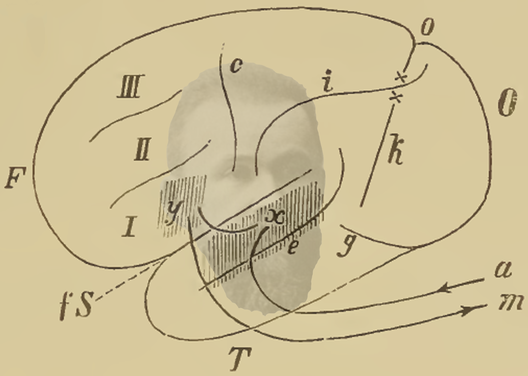Carl Wernicke1848–1905
Broca’s report of language deficits associated with specific brain lesions stimulated others to pursue the link between language and lesion. One of these was Wernicke who found results that did not correspond to those of Broca’s Tan, who was unable to articulate speech even though he could comprehend it. Wernicke examine a patient who had suffered a stroke and was capable of speech but was not able to understand either spoken or written language. On examining his brain after death, Wernicke found a lesion in the left hemisphere but in the rear parietal/temporal region. He published his results in 1874 and named the condition sensory aphasia, but it is now also known as Wernicke’s aphasia. Wernicke is shown in his diagram of the brain from his Lehrbuch der Gehirnkrankheiten, published in 1881, specifying the regions involved in language comprehension by cross hatching. He referred to the figure as a schema for cortical language mechanisms with x indicating the sensory and y the motor language centres.
